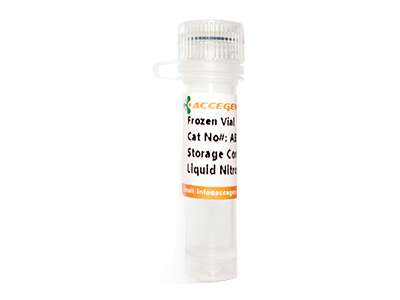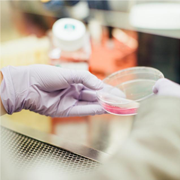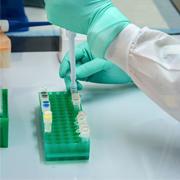Home > Products > Primary Cells > Animal Primary Cells > Mouse Primary cells >
C57BL/6 Mouse Tracheal and Bronchial Epithelial Cells |
|||||||
|---|---|---|---|---|---|---|---|
| Product Name |
C57BL/6 Mouse Tracheal and Bronchial Epithelial Cells |
||||||
| Price | Get Quote | ||||||
| Cat.No |
ABC-TC4285 |
Species |
C57BL/6 Mouse |
||||
| Size/Quantity |
1 vial |
||||||
| Shipping Info |
Dry Ice |
Storage |
Liquid Nitrogen |
||||
| Description |
AcceGen’s C57BL/6 Mouse primary tracheal and bronchial epithelial cells are isolated from tracheal and bronchial tissue of pathogen-free laboratory mice. This allows researchers to study the cells in a state that closely resembles their natural environment. Primary cells are used in experiments to better understand normal cellular function, disease mechanisms, and potential therapeutic interventions.
Why choose C57BL/6 Mouse primary tracheal and bronchial epithelial cell from AcceGen?
Reliability: AcceGen’s cells are subjected to stringent quality control measures, ensuring reliability and consistency in every experiment.
Cutting-Edge Viability: Experience post-thaw viability that goes beyond industry standards, providing you with robust cells for your research endeavors.
Comprehensive Growth Validation: AcceGen goes the extra mile by validating the growth characteristics using morphology and immunocytochemistry, thereby guaranteeing cells that meet the highest standards of quality. |
||||||
| Disease | Normal |
||||||
| Source Organ | Tracheal and Bronchial |
||||||
| Quality Control | All cells test negative for mycoplasma, bacteria, yeast, and fungi. |
||||||
| Recommended Medium And Supplement | ABM-TM4285 C57BL/6 Mouse Primary Tracheal and Bronchial Epithelial Cells Medium Kit |
||||||
| Citation Guide |
When you publish your research, please cite our product as “AcceGen Biotech Cat.# XXX-0000”. In return, we’ll give you a $100 coupon. Simply click here and submit your paper’s PubMed ID (PMID). |
||||||
| Application | FOR RESEARCH USE ONLY C57BL/6 Mouse primary tracheal and bronchial epithelial cells constitute a valuable resource in scientific research, offering a diverse range of applications across various disciplines.Here are key applications for researching mouse primary tracheal and bronchial epithelial cells in scientific endeavors.
Respiratory Disease Modeling: The cells serve as an essential tool for modeling respiratory diseases such as asthma, chronic obstructive pulmonary disease (COPD), and cystic fibrosis. Researchers can induce disease-specific conditions in these cells to study pathophysiological mechanisms and test potential therapeutic interventions.
Airway Epithelial Barrier Function: Mouse primary tracheal and bronchial epithelial cells are utilized to explore the barrier function of the airway epithelium. Investigations focus on understanding how these cells contribute to the defense against inhaled pathogens and environmental insults.
Drug Discovery and Development: The cells are employed in drug screening assays to assess the impact of pharmaceutical compounds on airway epithelial function.Researchers can evaluate potential drug candidates for respiratory diseases, aiming to identify molecules that modulate cellular responses.
Inflammatory Response Studies: Mouse primary epithelial cells allow the study of inflammatory responses in the airways, contributing to the understanding of immune regulation. Investigations into cytokine release, immune cell interactions, and inflammation-related signaling pathways provide insights into respiratory diseases with an inflammatory component.
Toxicology and Environmental Impact: These cells are utilized to assess the impact of environmental pollutants and toxic substances on the respiratory epithelium. Research in this area helps identify potential hazards and mechanisms of action for pollutants affecting respiratory health.
Mucociliary Clearance Studies: Mouse primary tracheal and bronchial epithelial cells are instrumental in studying mucociliary clearance mechanisms. Understanding how these cells contribute to the removal of mucus and foreign particles from the airways is crucial for respiratory health research.
Regenerative Medicine: Researchers explore the regenerative potential of these cells for applications in tissue engineering and regenerative medicine. Investigating the differentiation capacity of the cells may contribute to developing therapies for airway repair and regeneration. |
||||||
| Growth Conditions | 37 ℃, 5% CO2 |
||||||
| Cell Type | Epithelial |
||||||
| Growth Mode | Adherent |
||||||
| Product Type |
Mouse Primary Cells |
||||||
| Product Image |

|
||||||
- ONLINE INQUIRY
- PRODUCT REVIEWS
Fill out a request in the form below and we’ll get back to you within 24 hours with a quote.






